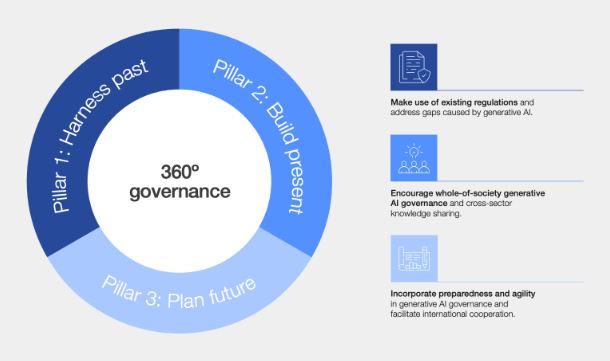Balancing Financial Innovation and Regulation: A Governance Perspective
 Vamsee Pamisetty
Vamsee Pamisetty
The rapid pace of financial innovation over the last few decades has dramatically transformed global markets, business practices, and consumer behavior. From blockchain technology and cryptocurrency to artificial intelligence (AI) and mobile banking, these innovations have led to unprecedented efficiencies, accessibility, and growth in the financial sector. However, they also present significant challenges for regulators, as new technologies often outpace the development of regulatory frameworks. The question of how to balance financial innovation with regulation is critical, not just for ensuring the stability and integrity of the financial system, but also for fostering innovation that can drive long-term economic growth.
At the heart of this issue lies the tension between encouraging innovation and maintaining robust oversight. Financial markets and institutions operate in an environment where trust, transparency, and security are essential for participants. When new financial products or services emerge, they frequently involve novel risks—whether in terms of technology, market dynamics, or systemic impacts—that regulators may not be prepared to manage. On the other hand, excessive regulation can stifle innovation, preventing the financial industry from reaping the full benefits of technological advancements and possibly reducing competitiveness in global markets.
EQ.1.Risk-Reward Equation in Financial Innovation:

The Role of Financial Innovation
Financial innovation refers to the creation and adoption of new financial products, services, and technologies designed to improve the efficiency, accessibility, and functionality of the financial system. These innovations may include products such as digital currencies, mobile payments, peer-to-peer lending platforms, and new forms of investment vehicles (e.g., exchange-traded funds or robo-advisors). Furthermore, advancements in data analytics, machine learning, and blockchain have reshaped how financial institutions make decisions, assess risks, and interact with consumers.
The benefits of financial innovation are clear. Innovations can lower transaction costs, enhance financial inclusion by providing services to underserved populations, increase market liquidity, and improve customer experience through personalized services. Additionally, they can lead to the development of new financial products that diversify risk and provide consumers with more tailored solutions. These benefits are especially evident in emerging economies, where technological innovations like mobile banking have transformed access to banking services, contributing to economic development.
However, the fast pace of innovation brings with it risks that need to be carefully managed. Unregulated financial products and services can be exploited, leading to fraud, market manipulation, and financial instability. The complexity and anonymity associated with some new technologies, such as cryptocurrencies, can also present challenges in terms of money laundering, tax evasion, and regulatory arbitrage.
Regulatory Challenges
Regulating financial innovations is inherently difficult because the technology is often ahead of the regulations. Traditional regulatory frameworks were not designed to handle decentralized financial systems, global digital platforms, or the vast amounts of data being processed by modern algorithms. Moreover, financial innovation tends to introduce complexities that challenge existing definitions and boundaries in the regulatory environment.
EQ.2.Regulatory Intervention Equation:

For instance, cryptocurrencies present a unique challenge because they do not fit neatly into existing legal categories of currency, securities, or commodities. They are decentralized, meaning there is no central authority governing their issuance or transactions. While some regulators have classified cryptocurrencies as commodities or securities, others have taken a more cautious approach, warning about the risks of speculative trading and market manipulation.
Similarly, the rise of artificial intelligence in financial decision-making processes, such as credit scoring and algorithmic trading, introduces questions about fairness, transparency, and accountability. AI can lead to biased outcomes if the underlying algorithms are not carefully designed or if they rely on incomplete or biased data. Furthermore, regulators must consider the implications of AI in decision-making for consumer protection and market stability.
The global nature of financial innovation adds another layer of complexity. Financial services today transcend national borders, creating a need for international coordination and cooperation. Different countries have different regulatory environments, and this disparity can create a situation where firms may exploit regulatory loopholes, shifting operations to jurisdictions with less stringent oversight. This phenomenon, known as regulatory arbitrage, undermines the effectiveness of regulation and can lead to regulatory fragmentation that complicates enforcement.
Balancing Innovation and Regulation: A Governance Framework
The key challenge for governance in the context of financial innovation is striking the right balance between fostering technological advancement and ensuring financial system stability. This requires a nuanced approach that encourages innovation while safeguarding the interests of consumers, investors, and the broader economy.
One essential principle in achieving this balance is to design regulations that are flexible and adaptive. Traditional regulatory approaches based on rigid, rules-based systems may be ill-suited to address the rapid evolution of financial technologies. Instead, regulators should adopt a principles-based approach that focuses on the underlying objectives of regulation—such as protecting market integrity, ensuring consumer protection, and promoting financial stability—while allowing for innovation. This approach allows regulators to adjust to emerging technologies without stifling their development.
Another key consideration is the need for greater collaboration between regulators and industry participants. Regulators should work closely with financial institutions, tech firms, and other stakeholders to understand the technologies being developed and the potential risks they may pose. This collaborative approach can also help ensure that regulation is based on a sound understanding of the technology and its practical implications. In some jurisdictions, "regulatory sandboxes" have been introduced to allow companies to test new financial products or services under the supervision of regulators, creating a safe space to innovate while still adhering to necessary safeguards.
Moreover, international cooperation is crucial for addressing the global nature of financial markets. Regulatory frameworks must be harmonized across borders to avoid gaps in oversight and prevent regulatory arbitrage. International organizations, such as the Financial Stability Board (FSB) and the International Monetary Fund (IMF), play an important role in promoting global regulatory standards and fostering cooperation among national regulators.
Conclusion
The dynamic relationship between financial innovation and regulation requires thoughtful governance that considers both the potential of new technologies and the need for effective oversight. By adopting flexible, principles-based regulation, fostering collaboration between regulators and industry, and enhancing international cooperation, it is possible to balance the dual objectives of encouraging innovation and ensuring financial stability. As the financial landscape continues to evolve, the role of governance will be crucial in shaping an ecosystem that benefits both consumers and the broader economy.
Subscribe to my newsletter
Read articles from Vamsee Pamisetty directly inside your inbox. Subscribe to the newsletter, and don't miss out.
Written by
